Tackling Kudzu Together in the North Pacolet River Gorge
By Virginia Hunter, AmeriCorps Communications and Education Associate.
Plunging over a thousand feet in some places, the North Pacolet River Gorge is one of the most rugged locations in the Carolinas. From Saluda down to Tryon, Highway 176 follows the North Pacolet River (and the Saluda Grade Rail Line) through this gorge, winding its way past Pearson’s Falls, Melrose Falls, and the Norman Wilder Forest.
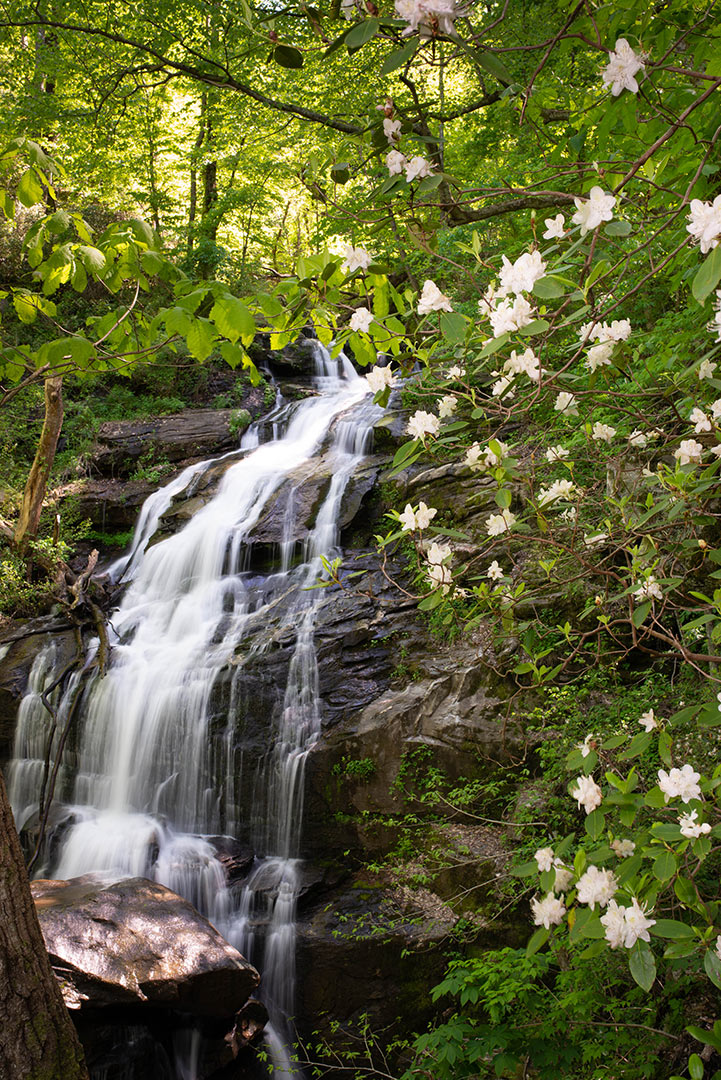
Locals have long known there’s something special about this place, where a stunning patchwork of ephemerals like Sweet White Trillium blanket the forest floor in the spring. Indeed, scientists have confirmed the gorge as a biodiversity hotspot, with dozens of rare species documented so far, like the White Irisette, Diana Fritillary, and Scarlet Kingsnake.
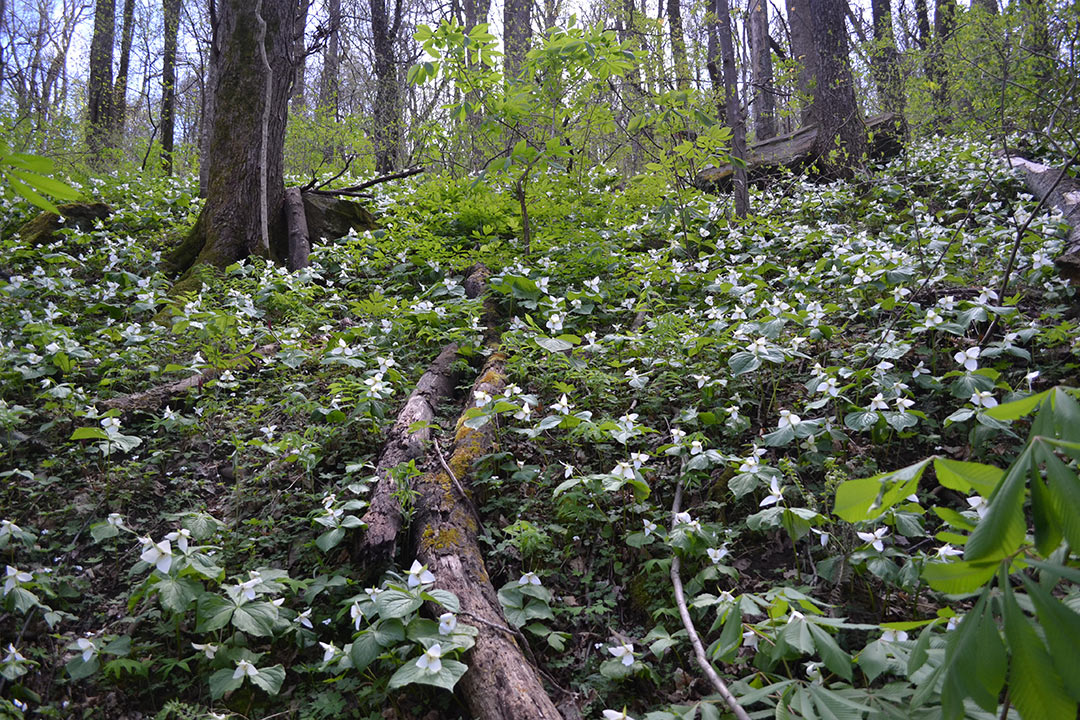
Like many steep roadsides in the South, during the 1930’s kudzu was planted along Highway 176 in a tragically misguided attempt to prevent erosion. For nearly a century now, kudzu has been destroying the natural beauty of the gorge, suffocating biodiversity on the land it covers. But the people of Polk County are taking action, and Conserving Carolina is helping.
Sections of the gorge are looking much healthier in recent years, thanks in large part to the Polk County Appearance Commission and the steadfast efforts of the Kudzu Warriors, Conserving Carolina’s Polk-based volunteer group. Since 2011, the Kudzu Warriors have met weekly to help eradicate kudzu on Conservancy land at Melrose Falls and the Norman Wilder Forest.
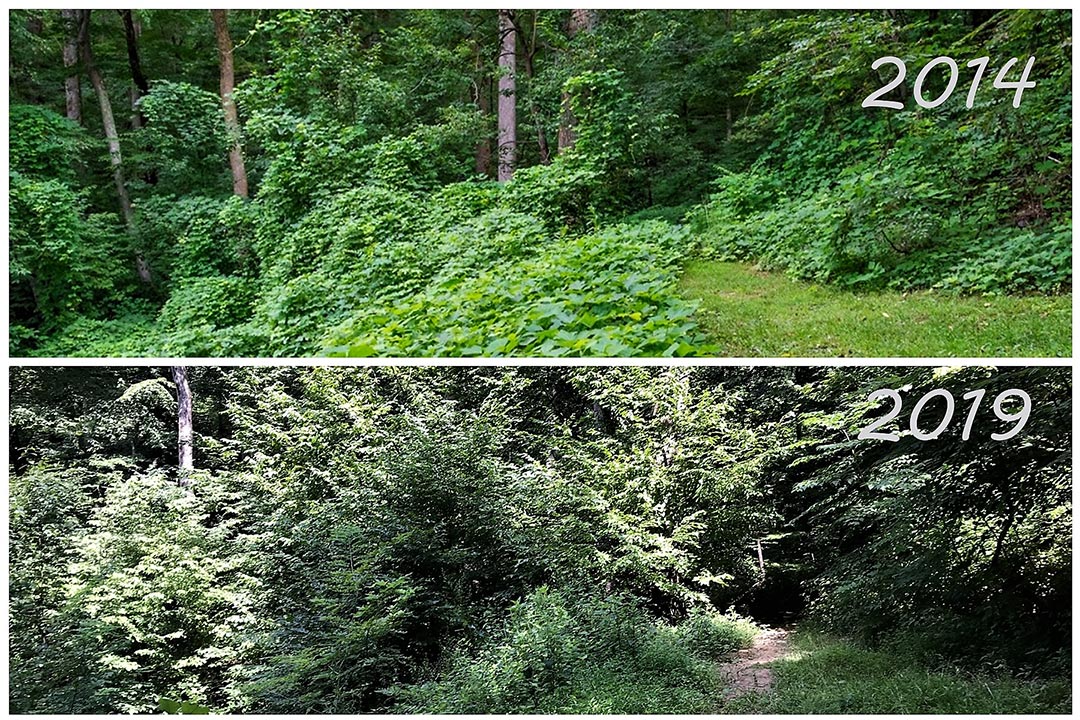
Kudzu is difficult enough to remove on flat, stable terrain, let alone on steep embankments. A few areas of Highway 176 in the gorge are too steep and dangerous, even for these intrepid volunteers.
But Conserving Carolina’s habitat restoration team is no stranger to tackling massive challenges. In 2019, the team received a matching grant from the Polk County Appearance Commission to begin removing kudzu along Highway 176.
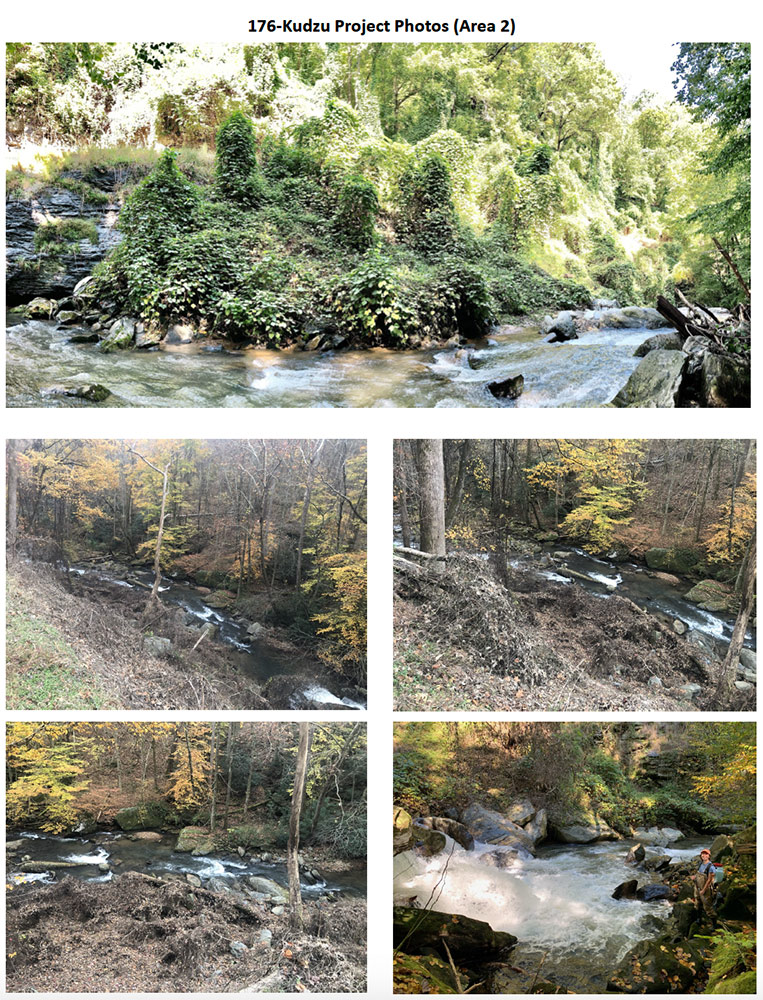
In the four years since, they’ve made significant progress on 176, controlling about 6 acres of kudzu on the most treacherous slopes.
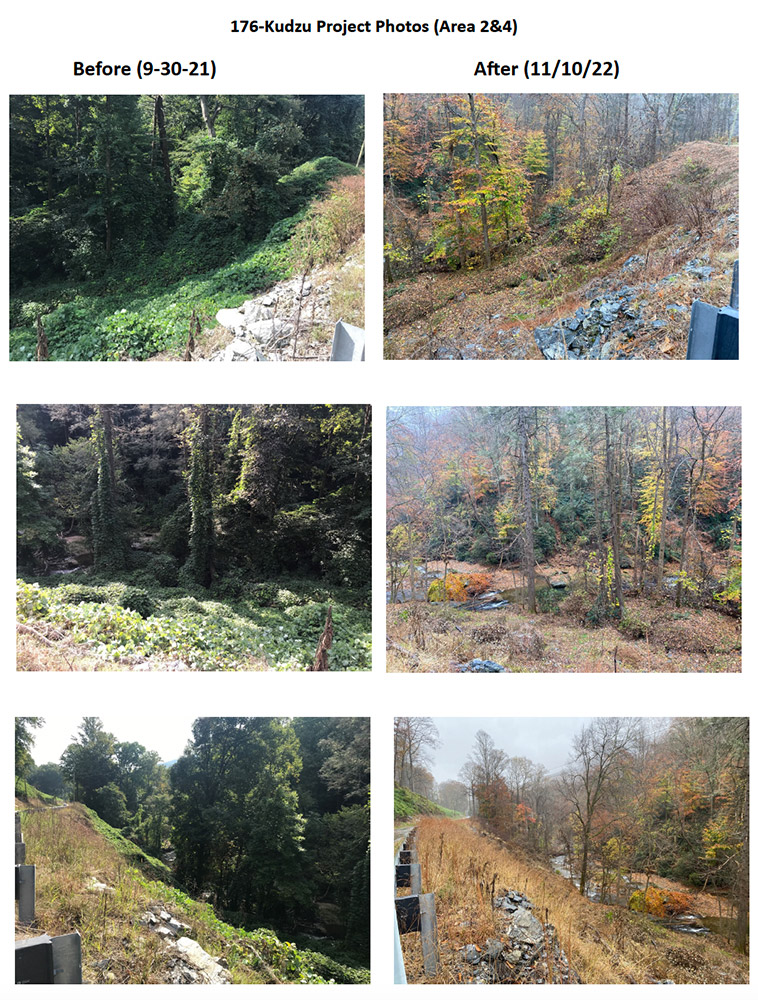
Last year, Conserving Carolina’s land management staff and AmeriCorps members labored over 90 hours on these acres. The team uses a variety of methods, including careful herbicide application and manual removal.
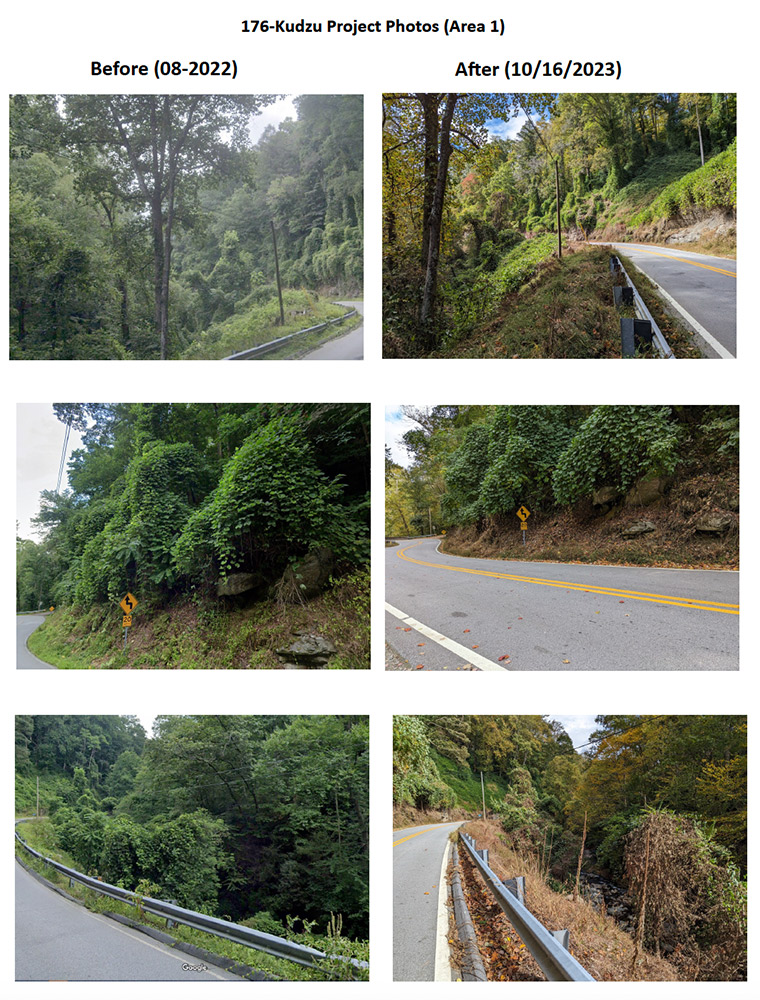
In November, the Polk County Appearance Commission renewed their matching grant for a fifth consecutive year to support the habitat restoration team as they continue their battle against kudzu. With no natural predators in this region, kudzu vines can grow up to a foot a day. Success will take sustained efforts over many years. Conserving Carolina is grateful for community partners who are in this with us for the long haul.
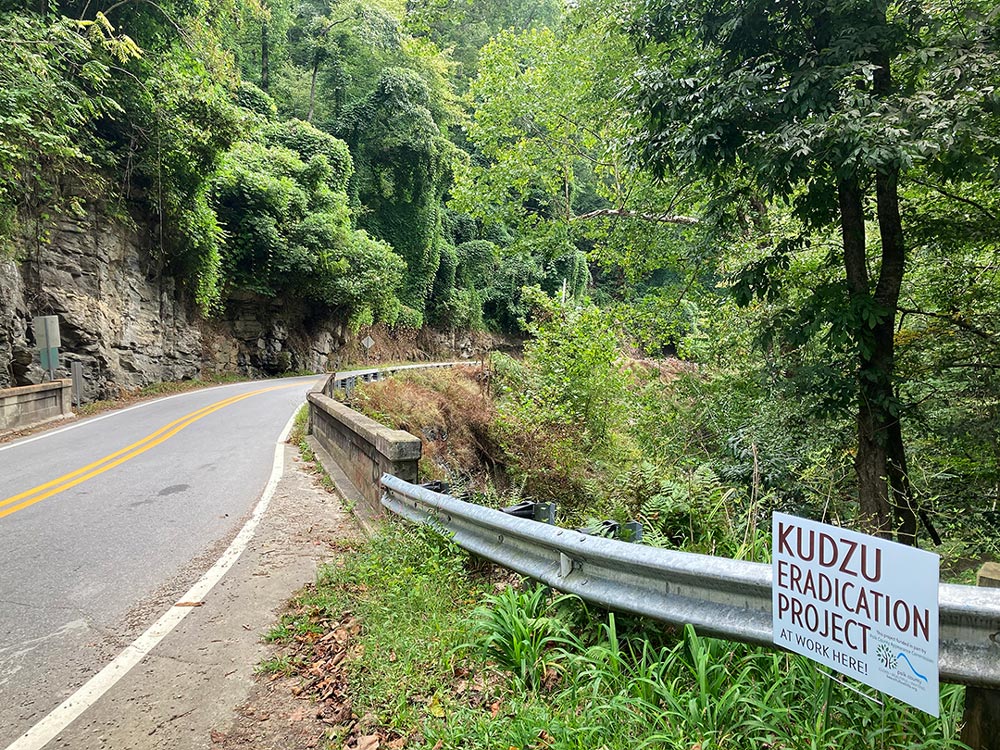
Interested in becoming a Kudzu Warrior? Fill out a volunteer application.
Is kudzu taking over your land? Learn the latest best practices for DIY removal, or hire knowledgeable local landscapers.